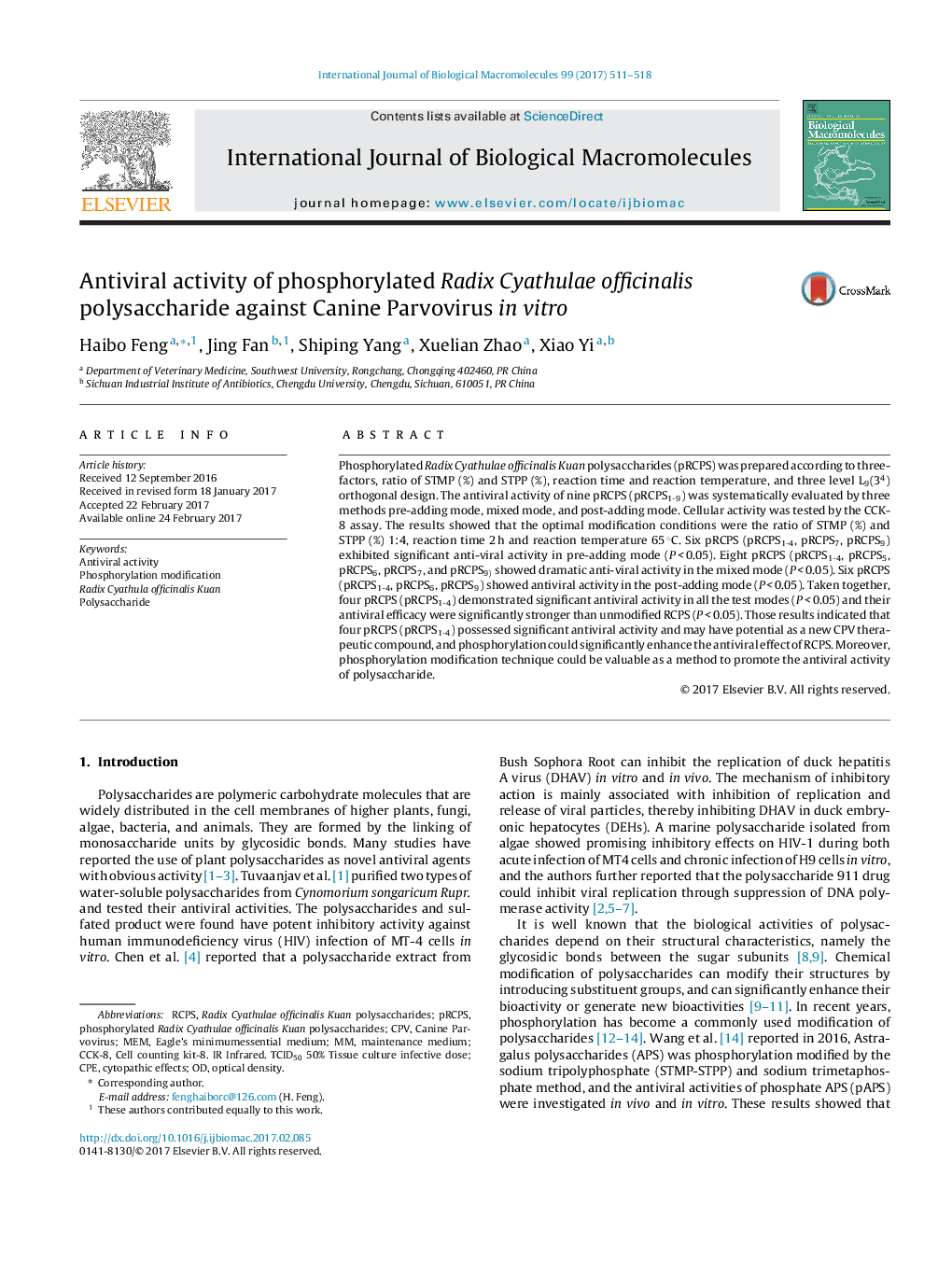| Article ID | Journal | Published Year | Pages | File Type |
|---|---|---|---|---|
| 5512085 | International Journal of Biological Macromolecules | 2017 | 8 Pages |
Abstract
Phosphorylated Radix Cyathulae officinalis Kuan polysaccharides (pRCPS) was prepared according to three-factors, ratio of STMP (%) and STPP (%), reaction time and reaction temperature, and three level L9(34) orthogonal design. The antiviral activity of nine pRCPS (pRCPS1-9) was systematically evaluated by three methods pre-adding mode, mixed mode, and post-adding mode. Cellular activity was tested by the CCK-8 assay. The results showed that the optimal modification conditions were the ratio of STMP (%) and STPP (%) 1:4, reaction time 2 h and reaction temperature 65 °C. Six pRCPS (pRCPS1-4, pRCPS7, pRCPS9) exhibited significant anti-viral activity in pre-adding mode (P < 0.05). Eight pRCPS (pRCPS1-4, pRCPS5, pRCPS6, pRCPS7, and pRCPS9) showed dramatic anti-viral activity in the mixed mode (P < 0.05). Six pRCPS (pRCPS1-4, pRCPS6, pRCPS9) showed antiviral activity in the post-adding mode (P < 0.05). Taken together, four pRCPS (pRCPS1-4) demonstrated significant antiviral activity in all the test modes (P < 0.05) and their antiviral efficacy were significantly stronger than unmodified RCPS (P < 0.05). Those results indicated that four pRCPS (pRCPS1-4) possessed significant antiviral activity and may have potential as a new CPV therapeutic compound, and phosphorylation could significantly enhance the antiviral effect of RCPS. Moreover, phosphorylation modification technique could be valuable as a method to promote the antiviral activity of polysaccharide.
Keywords
Related Topics
Life Sciences
Biochemistry, Genetics and Molecular Biology
Biochemistry
Authors
Haibo Feng, Jing Fan, Shiping Yang, Xuelian Zhao, Xiao Yi,
